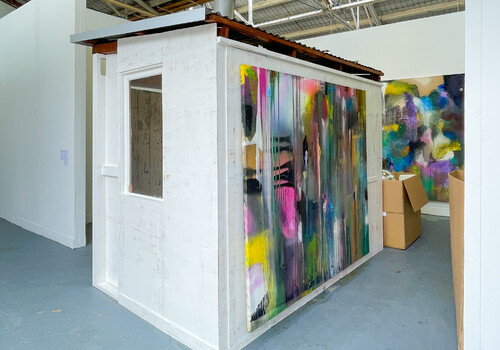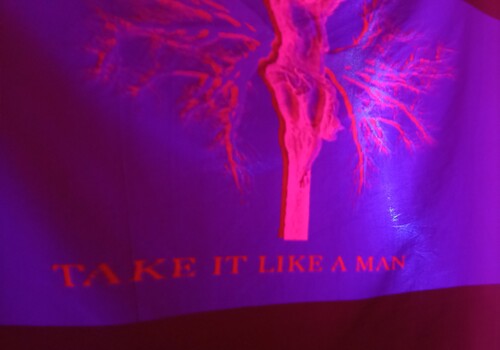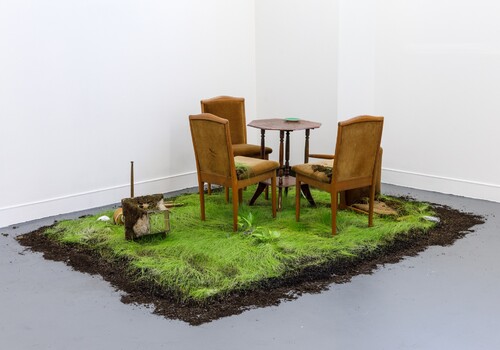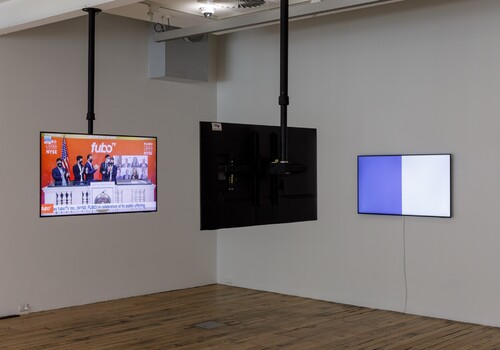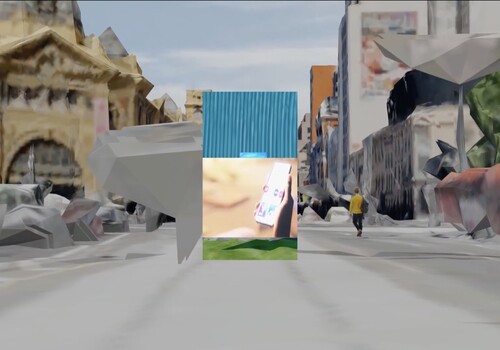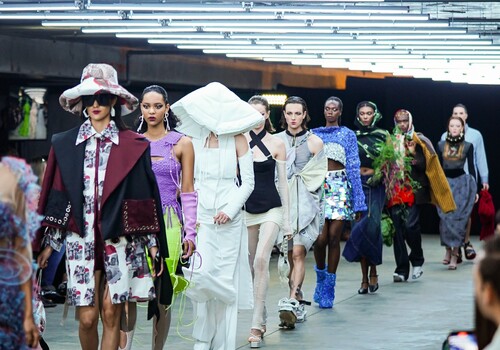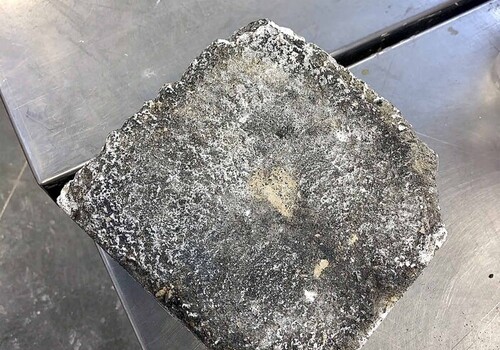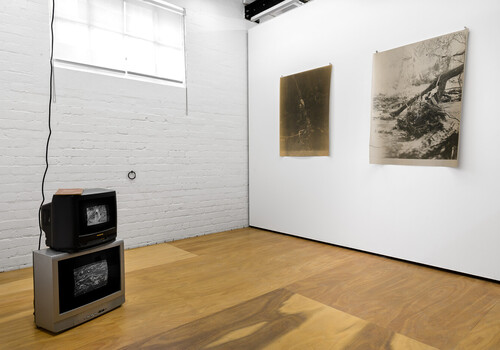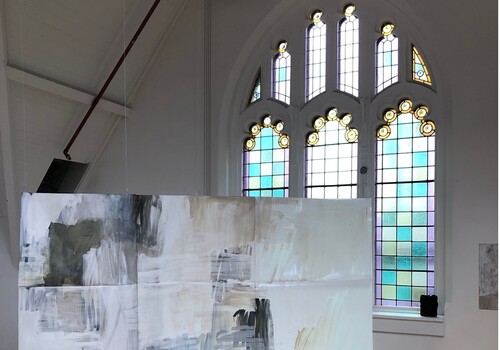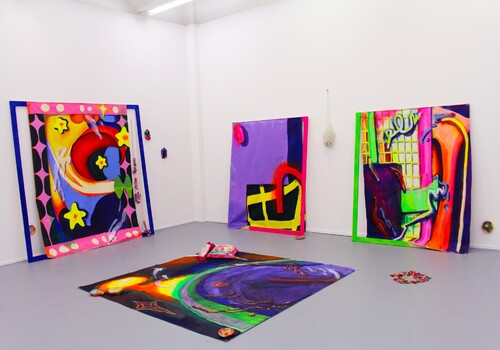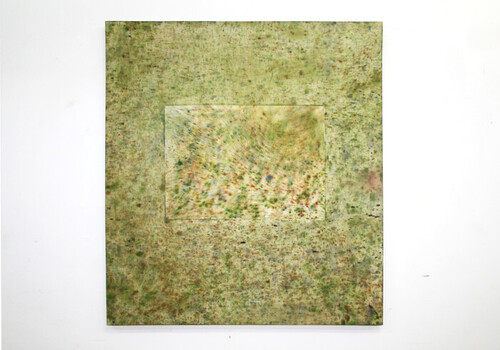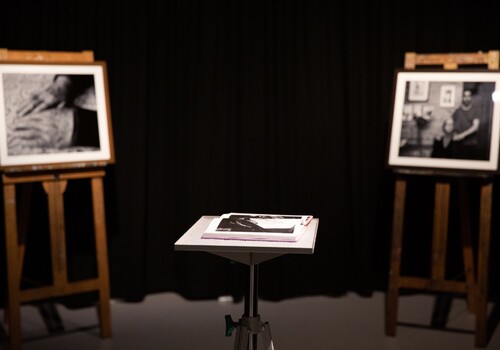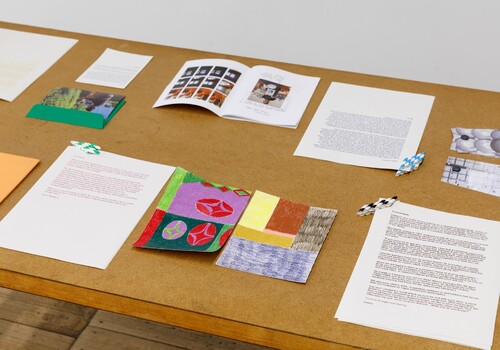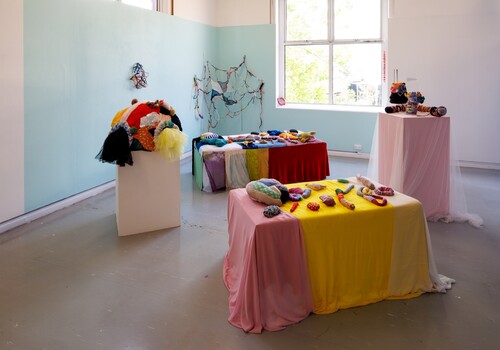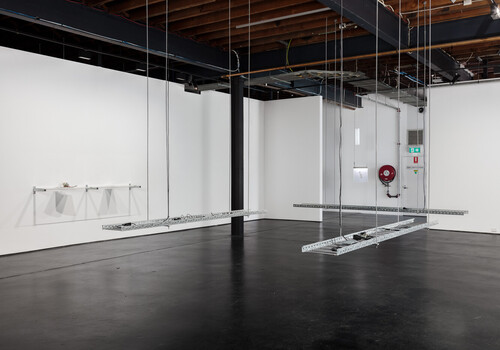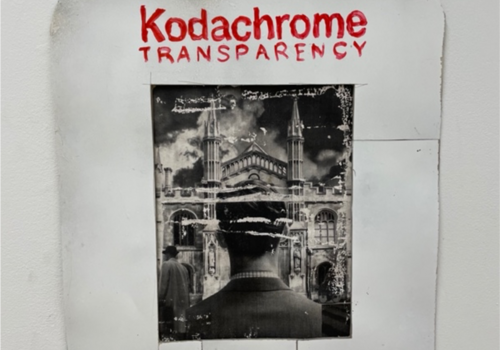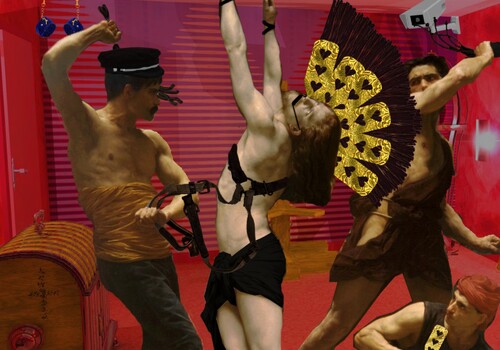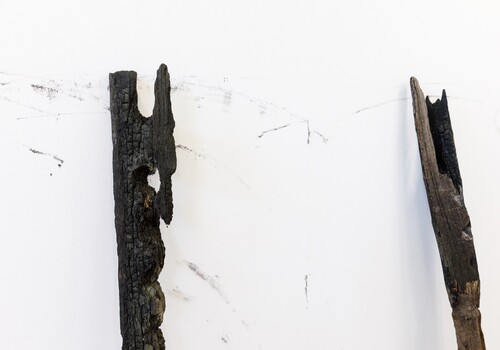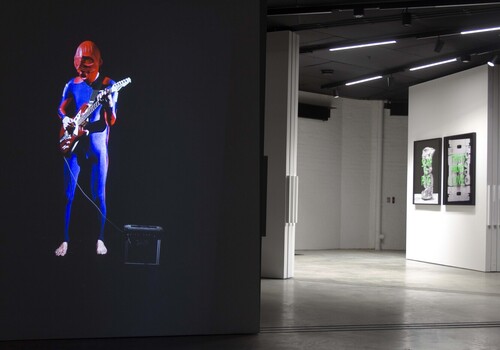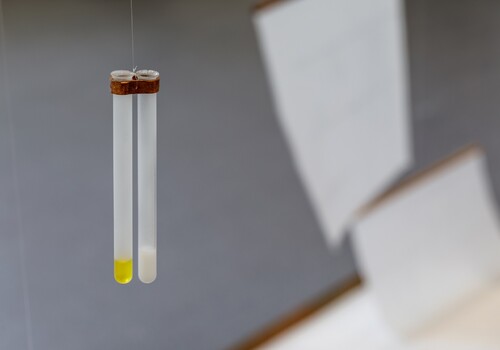Honours, Victorian College of the Arts
By Emily Winslade
Artists Freda Drakopoulos, Amina Briggs and Elsie Preston evoke the magic of domestic routines and mundane rituals in their ambitious contributions to the Victorian College of the Arts graduate exhibition. Drawing a line between art and life, these recent graduates delve into the ritualistic and cathartic processes of cleaning, making messes and archiving the detritus of life.
Entering a mirror-floored space on the lower level of The Stables Gallery at VCA, Drakopoulos began her performance Aaaaahhh (2021) by walking calmly into frame while carrying a towel, brush and clear bowl filled with water. Using these commonplace objects, Drakopoulos sparked an immediate connection to domestic chores and implements. The artist carefully collected a stone from the mirrored ground and began scrubbing it with the brush and water, after which she carefully placed the stone on a towel to dry. After performing this mundane action of washing the stone, Drakopoulos stood up caressing the stone, now wrapped up in the towel, eventually repositioning it on the shimmering ground. The gentle care of the stone might symbolise the raw human experience of companionship of familial or friendly love, as the rock serves as an object onto which the artist projects misplaced nurturing energies. Within the setting of a fine art exhibition, Drakopoulos has managed to recreate a domestic space of care that captures relatable acts of both menial labour and intimacy, as well as referencing the all-too-familiar disparity in domestic labour by recalling the unpaid chores traditionally assigned to women.
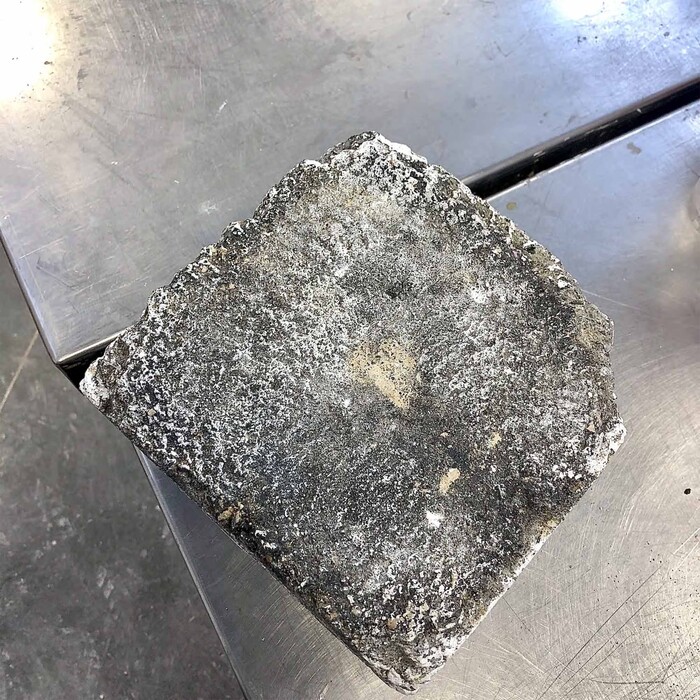
Similarly, Briggs explores mundane experiences with her sculptural piece Ebony (2021), which considers the everyday act of chewing gum and its connection to the body. Entering into the space the viewer immediately encounters a pile of empty chewing gum wrappers, reminiscent of Felix Gonzalez-Torres’ portrait of his dead lover in Untitled (Portrait of Ross in L.A.) (1991), which comprised Ross’ weight in candies. The branding of Extra and Hubba-Bubba echo throughout the disarray of the messy paper mountain. Unlike Torres’ work, the body returns, rendered in a limbless torso of chewed red gum, creating an interesting textural experience in its chaotic impressions of the teeth that formed it. The sight of chewing gum triggers numerous images and connections for different people, bringing up feelings of nostalgia evoked by the memories of saccharine and sour flavours—memories attached to the ordinary, ubiquitous act of chewing a piece of massed-produced candy. The work has a sugary strawberry smell that attracts the viewer to come closer and therefore look more intently at a commonplace product. Briggs has the astounding ability to turn the mundane act of chewing gum into an artwork that gives a form of beauty to something that has been deemed frivolous. Moreover, the process of chewing the gum, then using it as an art medium, confuses the traditional relationship between the artist’s body and the medium.
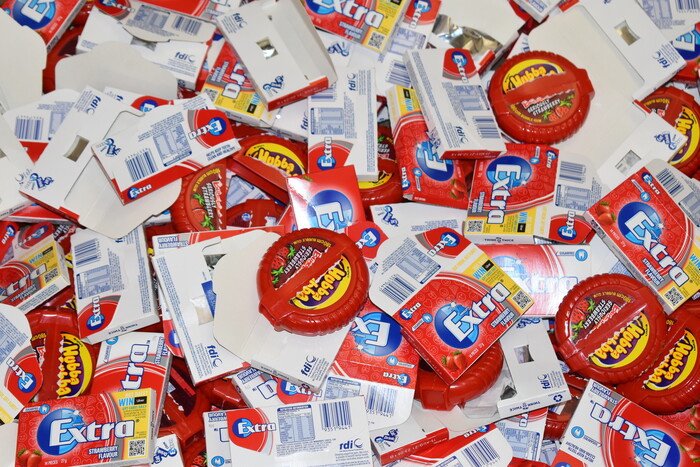
Using found objects associated with domestic spaces, Preston’s sculptural installation Highbrow (2021) continues this idea of bringing the mundane into the art sphere. By giving this assortment of ordinary items including paper toweling, lipstick, thread, pencil, buttons, handmade garment, found leather boots, wool and clothing tags, Preston archives elements of everyday life with the same respect as art objects in the gallery, or artifacts in a history museum. The installation imitates the concept of memorabilia through the apparent conservation of these items, therefore highlighting how ordinary items can become sentimental and sacred for personal and undiscernible reasons. Preston’s particular curation of everyday pieces that are used to decorate and conceal the body is similar to Drakopoulos’ and Briggs’ interest in cleaning and preserving—all have a relationship with commonplace practices of home life and personal care.
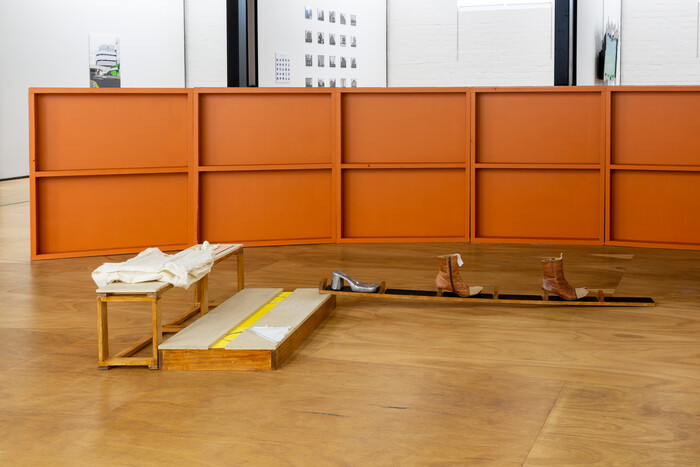
The chewing gum, washing of rocks and display of personal items seem to point out the pleasure and comfort in unappreciated mundane rituals and items, ranging from incredibly intimate objects to the unremarkable. These activities themselves encourage and cultivate a degree of creativity that perhaps captures an artistic joy shared by non-artists, who engage in their own creative processes in everyday acts of care and maintenance.
Emily Winslade is a Queer Naarm/Melbourne based artist and curator. She is a recent graduate of Bachelor of Fine Arts at Monash University and commences study at the University of Melbourne in 2022 for a Master of Curatorship.
